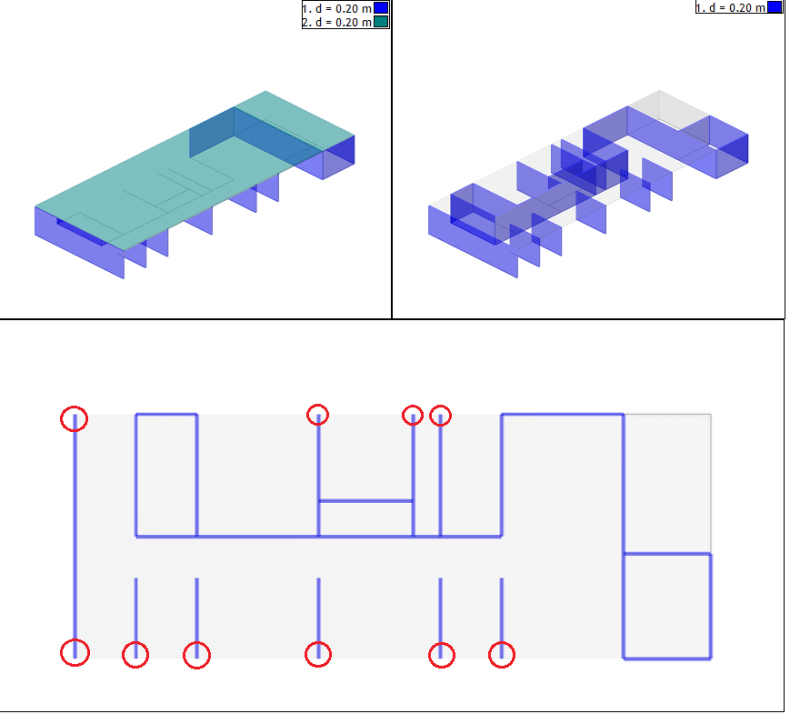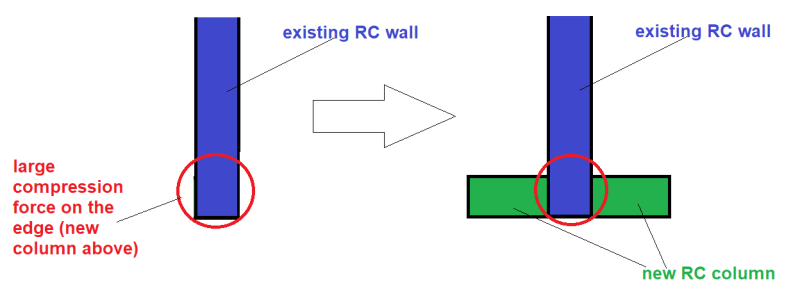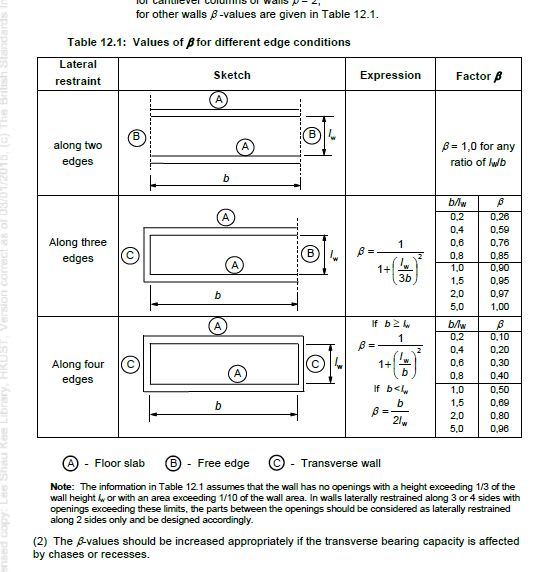Hi!
We are dealing with the existing RC walls (200 mm thick). Above the walls is the RC slab (200 mm thick)and existing timber roof (will be removed).
The plan is to add a new light storey (timber CLT walls and slabs)on top of existing one (instead of existing timber roof).
This means that the edges of existing RC walls (200 mm thick and 3 m high) will be loaded with large
compression forces from new columns (we are talking about 50 - 100 kN per column).
I'm wondering how do I check existing walls for buckling under new high forces.
I havent found anything usefull in Eurocodes (I found it for columns but not walls).
I'm also interested in ACI standard if someone has anything usefull.
If buckling is gonna be an issue I think the best way to solve this is to add new RC columns at the existing wall edeges.
Im aware we have to make sure that existing structure with new storey has sufficient foundations and seismic resisteance
after adding the new storey, but that's not what this post is about.
Thanks for help.
regards


We are dealing with the existing RC walls (200 mm thick). Above the walls is the RC slab (200 mm thick)and existing timber roof (will be removed).
The plan is to add a new light storey (timber CLT walls and slabs)on top of existing one (instead of existing timber roof).
This means that the edges of existing RC walls (200 mm thick and 3 m high) will be loaded with large
compression forces from new columns (we are talking about 50 - 100 kN per column).
I'm wondering how do I check existing walls for buckling under new high forces.
I havent found anything usefull in Eurocodes (I found it for columns but not walls).
I'm also interested in ACI standard if someone has anything usefull.
If buckling is gonna be an issue I think the best way to solve this is to add new RC columns at the existing wall edeges.
Im aware we have to make sure that existing structure with new storey has sufficient foundations and seismic resisteance
after adding the new storey, but that's not what this post is about.
Thanks for help.
regards



